Caryn’s Thoughts
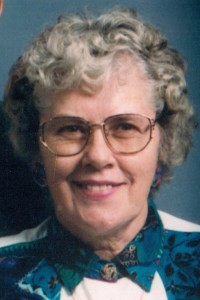 My aunt, Jeanette Byer is one tough lady. She has lived in the country for most of her life, and she is no stranger to hard work. In fact, I’m sure that is what has kept her young all these years. Aunt Jeanette is one lady who simply doesn’t know the word quit. She broke her leg one time, and she insisted that she could still do what she needed to do. So, with a crutch under one arm, and a weed-eater in the other hand, she proceeded to cut the weeds long the fence on their property. Aunt Jeanette simply would not let a little thing like a broken leg slow her down. She says, that she was raised in the country, and out there, you just do whatever you have to do…hard work and all. It was how you made a go of things in the country.
My aunt, Jeanette Byer is one tough lady. She has lived in the country for most of her life, and she is no stranger to hard work. In fact, I’m sure that is what has kept her young all these years. Aunt Jeanette is one lady who simply doesn’t know the word quit. She broke her leg one time, and she insisted that she could still do what she needed to do. So, with a crutch under one arm, and a weed-eater in the other hand, she proceeded to cut the weeds long the fence on their property. Aunt Jeanette simply would not let a little thing like a broken leg slow her down. She says, that she was raised in the country, and out there, you just do whatever you have to do…hard work and all. It was how you made a go of things in the country.
Aunt Jeanette’s sister-in-law, my aunt, Sandy Pattan told me something about Aunt Jeanette that is probably one of the nicest things I’ve ever heard said about a person. She said that Aunt Jeanette never had an unkind word to say about anybody. I was 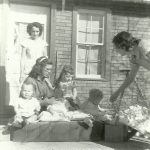 somewhat stunned about that. It wasn’t that I didn’t believe that about Aunt Jeanette, because I had no reason to doubt it. It was stunned because…seriously, how many people can honestly have that said about them, and yet there were several other people who said the same thing about Aunt Jeanette. She simply didn’t gossip, or say a harsh word about anyone. What an amazing tribute that is! I’ve thought about that statement since I first heard it.
somewhat stunned about that. It wasn’t that I didn’t believe that about Aunt Jeanette, because I had no reason to doubt it. It was stunned because…seriously, how many people can honestly have that said about them, and yet there were several other people who said the same thing about Aunt Jeanette. She simply didn’t gossip, or say a harsh word about anyone. What an amazing tribute that is! I’ve thought about that statement since I first heard it.
What kind of person literally never says an unkind word about anyone? This must be a very forgiving person. I 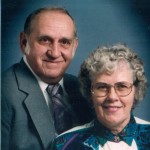 have known Aunt Jeanette all my life. She is a very sweet person, and I have always loved her very much. I can’t think of a time that I ever heard her say an unkind word about anyone. She has always been a fun person, and my husband, Bob and I have always enjoyed talking to her, and to her husband, my Uncle Larry, before his passing. Aunt Jeanette and Uncle Larry were always busy doing things. In fact, the place we often saw them was at Home Depot or Menard’s. They were always fixing something up. I think that is why Aunt Jeanette just never really aged. She stayed busy. Way to go Aunt Jeanette. Today is Aunt Jeanette’s birthday. Happy birthday Aunt Jeanette!! Have a great day!! We love you!!
have known Aunt Jeanette all my life. She is a very sweet person, and I have always loved her very much. I can’t think of a time that I ever heard her say an unkind word about anyone. She has always been a fun person, and my husband, Bob and I have always enjoyed talking to her, and to her husband, my Uncle Larry, before his passing. Aunt Jeanette and Uncle Larry were always busy doing things. In fact, the place we often saw them was at Home Depot or Menard’s. They were always fixing something up. I think that is why Aunt Jeanette just never really aged. She stayed busy. Way to go Aunt Jeanette. Today is Aunt Jeanette’s birthday. Happy birthday Aunt Jeanette!! Have a great day!! We love you!!

 My brother-in-law, Chris Hadlock has always loved the outdoors. In fact, for years, he my sister, Allyn and their family have gone camping during his birthday week. They usually go to Red Lodge, Montana, but this year he and Allyn did something a little different. This year, they went to Canada to spend the week in a houseboat, along with my sister, Caryl Reed and her husband, Mike; and my sister, Alena Stevens and her husband Mike. I know they are going to have a great time, and I can’t wait to see pictures of their trip. It’s such a unique kind of a trip, and I know they are all going to have a really great week. It will be a trip to remember, that’s for sure.
My brother-in-law, Chris Hadlock has always loved the outdoors. In fact, for years, he my sister, Allyn and their family have gone camping during his birthday week. They usually go to Red Lodge, Montana, but this year he and Allyn did something a little different. This year, they went to Canada to spend the week in a houseboat, along with my sister, Caryl Reed and her husband, Mike; and my sister, Alena Stevens and her husband Mike. I know they are going to have a great time, and I can’t wait to see pictures of their trip. It’s such a unique kind of a trip, and I know they are all going to have a really great week. It will be a trip to remember, that’s for sure.
This year seems to be shaping up to be one of change for Chris. He retired from the Casper Police Department on June 30th, after 27 years in law enforcement. During those yeas, he served the people of Casper and Natrona County capably and honorably. It has been a strange things for all of us to know that Chris is no longer a police officer. I also think that his retirement is a great loss to the Casper Police Department. Chris worked in so many areas of the department. He was a patrol officer for a number of years, then a supervisor and training officer. Later he hired new officers, and finally he was the supervisor of the detectives. His ability to do any job and do it well, is what made him such an asset to the department. Nevertheless, careers must come to an end sometime, and this was Chris’ time. I know that his new job will be a good career move too, and I am happy for him. Police work is stressful, and it’s time for him to de-stress.
Chris is rocking the career of grandpa too these days. He has three grandchildren so far, and they love to hang out with their grandpa. One of the things they really like to do is to listen to Chris play the guitar. He has been playing for most of his life, and I know his own kids loved to sit and listen to him play too. Now the next generation of kids are learning to love music from him as well. His youngest grandchild, Adelaide loves to help her grandpa play the guitar, and I’m sure the others did too. It is just so wonderful to be a grandparent. You aren’t the disciplinarian, and there is no pressure to be that. You just get to be to person they want to be with as 
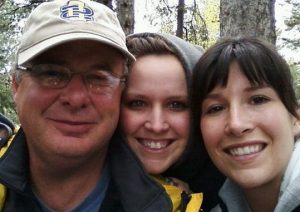 much as they can. They want to spend the night, and do the things you are doing, even if it’s work! If their grandparents are doing something, it must be the coolest thing in the world. There is just something about being a grandparent. It’s such an honor to watch the next generation of the sweet family you started, expanding to include these new little babies. That’s how Chris and Allyn are feeling now, and how they will feel far into the future. Today is Chris’ birthday. Happy birthday Chris!! Have a great day!! We love you!!
much as they can. They want to spend the night, and do the things you are doing, even if it’s work! If their grandparents are doing something, it must be the coolest thing in the world. There is just something about being a grandparent. It’s such an honor to watch the next generation of the sweet family you started, expanding to include these new little babies. That’s how Chris and Allyn are feeling now, and how they will feel far into the future. Today is Chris’ birthday. Happy birthday Chris!! Have a great day!! We love you!!
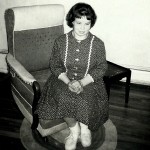
 I first met my sister-in-law, Marlyce Schulenberg when I was 18 years old, and she was 23 years old. She passed away when she was 39 years old. It has been 28 years since Marlyce passed away in 1989, so she has been gone 13 years longer than she was in my life. While that fact feels like a fact in some ways, it doesn’t in others. Marlyce had such a huge impact on my life. It wasn’t anything specific that she did, but rather it was everything about my sweet sister-in-law. Marlyce was developmentally disabled, and in some ways she remained a child all her life, but in other ways, she was an adult. She had a job, and she loved to bake and knit, and really she didn’t play. She understood that kids games were for kids, and she was an adult. She would play games intended for grownups though. One of her favorites was solitaire. She always had a deck of cards handy.
I first met my sister-in-law, Marlyce Schulenberg when I was 18 years old, and she was 23 years old. She passed away when she was 39 years old. It has been 28 years since Marlyce passed away in 1989, so she has been gone 13 years longer than she was in my life. While that fact feels like a fact in some ways, it doesn’t in others. Marlyce had such a huge impact on my life. It wasn’t anything specific that she did, but rather it was everything about my sweet sister-in-law. Marlyce was developmentally disabled, and in some ways she remained a child all her life, but in other ways, she was an adult. She had a job, and she loved to bake and knit, and really she didn’t play. She understood that kids games were for kids, and she was an adult. She would play games intended for grownups though. One of her favorites was solitaire. She always had a deck of cards handy.
Still, it was not those things that made Marlyce so special to me. It was her personality. She was such a loving person. I suppose that I had an advantage over her siblings in that I was not her sibling. Coming into the family as an outsider, gave me the ability to be a friend to Marlyce before I became her sister-in-law. There never were the sibling rivalries or the sibling fights, because while Marlyce knew I was her sister-in-law, I don’t think she ever really thought of me that way, exactly. I was maybe more her permanent friend. Permanent in that I was a fixture within the family unit, and friend, in that I was not her blood sister. Of course, all of her siblings loved Marlyce too, but having grown up with her, they did all fight…like all siblings do.
One thing I recall about Marlyce that was kind of funny, is how protective she could be over her siblings. If she was mad at them…well, you knew it. She had no problem telling any one of them just what she thought, but if one of her siblings was getting into trouble…well, that was a different thing. I can’t tell you how many times I heard Marlyce telling her parents that they should be nice to her brother or sister. She was quite vocal about it. 
 And even after the disciplinary action was over, she was still pretty mad at the offending parent. It was pretty comical, but I didn’t dare laugh about it, because Marlyce didn’t like being laughed at…and I would never hurt her feelings that way. Marlyce was so sweet. I couldn’t pick on her. When I think of all the years that Marlyce has been gone, I am saddened, because we are missing out on all the sweetness that was Marlyce. Everything about Marlyce was sweet, and I miss her very much. Today would have been Marlyce’s 67th birthday. Happy birthday in Heaven Marlyce. We love you very much.
And even after the disciplinary action was over, she was still pretty mad at the offending parent. It was pretty comical, but I didn’t dare laugh about it, because Marlyce didn’t like being laughed at…and I would never hurt her feelings that way. Marlyce was so sweet. I couldn’t pick on her. When I think of all the years that Marlyce has been gone, I am saddened, because we are missing out on all the sweetness that was Marlyce. Everything about Marlyce was sweet, and I miss her very much. Today would have been Marlyce’s 67th birthday. Happy birthday in Heaven Marlyce. We love you very much.
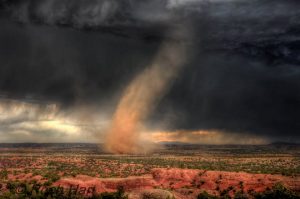 Weather has always been a subject of interest to people, even if we still don’t completely have a full grasp of it, not even after all these years and all our technology. The main difference I see now is that we hear about weather all the time. It’s on television, the radio, and even our phones. There are warnings for everything…thunder storms, tornadoes, snow storms, flash floods, and hurricanes. Nevertheless, all the meteorologists can truly do is predict a weather event. It may or may not materialize.
Weather has always been a subject of interest to people, even if we still don’t completely have a full grasp of it, not even after all these years and all our technology. The main difference I see now is that we hear about weather all the time. It’s on television, the radio, and even our phones. There are warnings for everything…thunder storms, tornadoes, snow storms, flash floods, and hurricanes. Nevertheless, all the meteorologists can truly do is predict a weather event. It may or may not materialize.
Now, flash back to, oh say 1680 or even to 1521. Other than looking at the sky, how did the people predict the weather? Yes the sky can be a great predictor of coming storms, but unless you knew something about weather  patterns, you would be unlikely to have any idea that something like a tornado, flood, or hurricane were coming. Especially in 1680 or 1521. Those dates are rather important in the world of weather. In August of 1521, a meteorological phenomenon occurred in the Basin of Mexico. There were no cameras back them, no cell phones or computers to record the event. The only known description appears in Book XII of the Florentine Codex, which is an account of the Spanish conquest of Mexico written in Nahuatl in the mid-sixteenth century. The account states that just before the fall of Mexico-Tenochtitlan a heavy storm which included a whirlwind struck the basin. The whirlwind hovered for a while above Tlatelolco, Tenochtitlan’s twin city. Then it moved to the lake where it disappeared.
patterns, you would be unlikely to have any idea that something like a tornado, flood, or hurricane were coming. Especially in 1680 or 1521. Those dates are rather important in the world of weather. In August of 1521, a meteorological phenomenon occurred in the Basin of Mexico. There were no cameras back them, no cell phones or computers to record the event. The only known description appears in Book XII of the Florentine Codex, which is an account of the Spanish conquest of Mexico written in Nahuatl in the mid-sixteenth century. The account states that just before the fall of Mexico-Tenochtitlan a heavy storm which included a whirlwind struck the basin. The whirlwind hovered for a while above Tlatelolco, Tenochtitlan’s twin city. Then it moved to the lake where it disappeared.
When the experts of today look at the account of the phenomenon in the context of the Nahua culture, and  comparing it with European descriptions of tornados and waterspouts, they can determine that the phenomenon was indeed a tornado. Their conclusion is further supported by eighteenth and nineteenth century pictorial and written evidence showing that tornadoes do occur in the territory now occupied by Mexico City. Since the tornado of Tlatelolco predates the Cambridge, Massachusetts, tornado of July 8, 1680, which had been thought to be the first recorded tornado in the Americas, the Tlatelolco tornado actually represents the earliest documented tornado in the Americas. Either way, since people didn’t really have much information to go on back then, I’m sure they first said some version of “What is that?!!?” At least, I know I would have.
comparing it with European descriptions of tornados and waterspouts, they can determine that the phenomenon was indeed a tornado. Their conclusion is further supported by eighteenth and nineteenth century pictorial and written evidence showing that tornadoes do occur in the territory now occupied by Mexico City. Since the tornado of Tlatelolco predates the Cambridge, Massachusetts, tornado of July 8, 1680, which had been thought to be the first recorded tornado in the Americas, the Tlatelolco tornado actually represents the earliest documented tornado in the Americas. Either way, since people didn’t really have much information to go on back then, I’m sure they first said some version of “What is that?!!?” At least, I know I would have.

 My grandniece, Anna Masterson is her own person. She likes what she likes, and she doesn’t care if that makes her different. She doesn’t care if the things she is into are the popular things that others are into or not. If others don’t Ike what she likes…oh well. Anna is not bothered by her uniqueness…and neither am I.
My grandniece, Anna Masterson is her own person. She likes what she likes, and she doesn’t care if that makes her different. She doesn’t care if the things she is into are the popular things that others are into or not. If others don’t Ike what she likes…oh well. Anna is not bothered by her uniqueness…and neither am I.
Anna is a quiet girl, but she’s not a shy girl. People think she is shy, but she is a listener. Anna gets to know people and what they are all about before she dives into the conversation. She likes to “figure you out” as her mom, Dustie would say. Once she figures you out, she will let you into her world. Anna thinks before she speaks, and her mom says Anna tends to astound her with with her observations and thoughts. Anna is a realist. She has questions about a lot of things and she wants a real answer, not a sugar coated one intended to make her think the world is all soft and sweet. Anna loves to sit and watch documentaries with her mom. She doesn’t care what it’s about, just that it’s real. She’s very smart and her favorite subjects in school are Math and Science.
She loves God, family, and country, in that order. Her loyalty to all of those is second to none. Her cousin, Aleesia Spethman is like a little sister to her. They are both the youngest in their family, and they are just like sisters, complete with sibling rivalry and the fighting that goes along with it. Nevertheless, as annoyed as she may get with her younger cousin, She also councils her, comforts her and protects Aleesia even from Anna’s brother, Matthew who is Anna’s best friend. Sometimes, When Matthew is to much for Anna to handle alone, she pulls out the big guns, her big sister, Raelynn. These days, since Raelynn had to have back surgery, Anna is extremely protective of of her older sister too. If she hears her sister crying in the night from pain, she is the first one there to comfort her.

 Anna has a bright future ahead of her, quite possibly in the area of science. Her close relationship with God will guide her to what he has planned for her. Her parents have no worries about this girl, who is very comfortable in her own skin. She does have a funny side too, though, and according to her mom, loves cheesy puns. One night, she and her mom were making pizza crust. When they were all done and went to wash their hands off, Anna said that they “had just gotten out of a very sticky situation.” Today is Anna’s 10th birthday. Happy birthday Anna!! Have a great day!! We love you!!
Anna has a bright future ahead of her, quite possibly in the area of science. Her close relationship with God will guide her to what he has planned for her. Her parents have no worries about this girl, who is very comfortable in her own skin. She does have a funny side too, though, and according to her mom, loves cheesy puns. One night, she and her mom were making pizza crust. When they were all done and went to wash their hands off, Anna said that they “had just gotten out of a very sticky situation.” Today is Anna’s 10th birthday. Happy birthday Anna!! Have a great day!! We love you!!
 I think we have all had times when we couldn’t seem to concentrate on our work. Or maybe you had a child who couldn’t concentrate on their homework. Well, in 1925, an inventor named Hugo Gernsback, a Luxembourgish-American inventor, writer, editor, and magazine publisher, invented a helmet to make sure a person focused on their work. It was called the Isolator, and it was…well, bizarre. Gernsback was often known as “The Father Of Science Fiction,” and one look at his invention can tell you why that might be. The Isolator was a wooden helmet that blocked out sound and vision in order to help the wearer focus on whatever task was at hand. Gernsback claimed that the helmet blocked out sound by up to 95%, and the tiny glass spy-hole ensured that no amount of movement nearby could be seen, so that the wearer was not distracted. This would eliminate all outside distractions, and barely give enough room for the wearer to see the work in front of them, and nothing else.
I think we have all had times when we couldn’t seem to concentrate on our work. Or maybe you had a child who couldn’t concentrate on their homework. Well, in 1925, an inventor named Hugo Gernsback, a Luxembourgish-American inventor, writer, editor, and magazine publisher, invented a helmet to make sure a person focused on their work. It was called the Isolator, and it was…well, bizarre. Gernsback was often known as “The Father Of Science Fiction,” and one look at his invention can tell you why that might be. The Isolator was a wooden helmet that blocked out sound and vision in order to help the wearer focus on whatever task was at hand. Gernsback claimed that the helmet blocked out sound by up to 95%, and the tiny glass spy-hole ensured that no amount of movement nearby could be seen, so that the wearer was not distracted. This would eliminate all outside distractions, and barely give enough room for the wearer to see the work in front of them, and nothing else.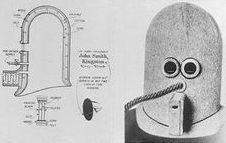
While it might have been a great device to help the wearer focus, it looked more like some kind of medieval torture device. The front of the device had an oxygen tube that was attached to a bottle of oxygen, so it was impossible to eat and study too. So, with no sound, no food, no way to play video games, the modern child would have no choice but to focus on homework. Now, I don’t know if the device could be locked in place…only to be removed when the work at hand was done, but if that is the case, I would think the wearer would get right to the task, so that the device could come off sooner. Just think of how much studying a college student could accomplish. Of course, my guess would be that even a person who was not claustrophobic before wearing the Isolator, would be claustrophobic after wearing it…not to mention a little paranoid, and leery of the person  who made them wear the Isolator in the first place.
who made them wear the Isolator in the first place.
The Isolator never really caught on, and I think anyone can see why that might be, but I guess it might have been a good idea, had it not been so archaic and confining. Of course, that was only part of the problem. The wearer also looked ridiculous, and while they could be anonymously ridiculous looking in some places, it didn’t work that way at the office or in study hall, where everyone knew who was in the office or class. And, of course, it would be really creepy sitting next to someone who was wearing the Isolator. I think we will have to chalk this one up to a good idea gone crazy.
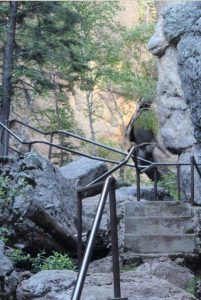
 After a spring filled with pneumonia for my husband, Bob and bronchitis for me, our annual hiking trip to the Black Hills of South Dakota was in question. Not the trip itself really, but the normal amount of hiking that we do, and the trails we normally take. We had determined that our favorite trail, up to Harney Peak was simply out of the question, and our early hikes were the Willow Creek trail, and two days on the Mickelson trail, both considered easy trails. We did exceptionally well, and so we decided that today would be a day for a moderate trail. We used the AllTrails app to make our decision, and settled on the Sunday Gulch trail, which takes off from Sylvan Lake.
After a spring filled with pneumonia for my husband, Bob and bronchitis for me, our annual hiking trip to the Black Hills of South Dakota was in question. Not the trip itself really, but the normal amount of hiking that we do, and the trails we normally take. We had determined that our favorite trail, up to Harney Peak was simply out of the question, and our early hikes were the Willow Creek trail, and two days on the Mickelson trail, both considered easy trails. We did exceptionally well, and so we decided that today would be a day for a moderate trail. We used the AllTrails app to make our decision, and settled on the Sunday Gulch trail, which takes off from Sylvan Lake.
When we got to the trailhead, the sign said that it was a strenuous trail that was four miles long and was expected to take two to three hours to complete. The trail’s rating made us hesitate, but we decided that if it got too rough, we would turn around and head back. We began the trail with a down hill hike across the rocks, with handrails to keep you from slipping. Yes…it was that difficult. My instincts said, “Maybe this isn’t such a good idea.” But, insanity won out, and we pressed on. The 
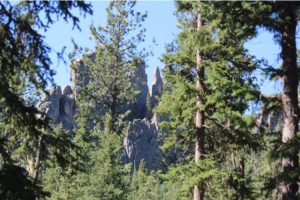 trail was beautiful, and the air was cool down in the gulch, despite the 90° temperatures up above. We had started the hike early enough, and expected to be done by 11:30am. As we continued down, using several handrails to cross the difficult rocks, I just kept hoping that we didn’t have to go back up those rocks.
trail was beautiful, and the air was cool down in the gulch, despite the 90° temperatures up above. We had started the hike early enough, and expected to be done by 11:30am. As we continued down, using several handrails to cross the difficult rocks, I just kept hoping that we didn’t have to go back up those rocks.
After what we now know to be the last of the handrails, we came across the first people we would see. The were a young couple who told us the were beginning hikers. We asked if they had hiked this trail before. They had not, but they told us that the trail ahead was a gradual uphill hike…mostly anyway…with no handrails. My mind felt instant relief. It was short lived. Yes, the hike was a gradual uphill…some of the way, and no, there were no handrails. That doesn’t mean that the hike was easy. Granted we were not in the same shape we had been in years past, but I had hoped 
 that we were in better shape than it seemed we were. The 11:30am mark came and went, with us being apparently no closer to the end of the trail. We were close to the road at times, but there was no guarantee that it would be an easier hike. As we climbed I thought about two things. First, I had probably chosen a trail that was too hard for us. Second, that we were actually more that three quarters of the way through that trail, and while we were tired, we were making it. We were making it!! When we finally reached the end of the trail at 12:30pm, we felt a sense of pride in our accomplishment. We had broken through a barrier, and we made it back. It was the most strenuous, moderate trail we have ever hiked, but we did it, it was beautiful…and that’s what it’s all about.
that we were in better shape than it seemed we were. The 11:30am mark came and went, with us being apparently no closer to the end of the trail. We were close to the road at times, but there was no guarantee that it would be an easier hike. As we climbed I thought about two things. First, I had probably chosen a trail that was too hard for us. Second, that we were actually more that three quarters of the way through that trail, and while we were tired, we were making it. We were making it!! When we finally reached the end of the trail at 12:30pm, we felt a sense of pride in our accomplishment. We had broken through a barrier, and we made it back. It was the most strenuous, moderate trail we have ever hiked, but we did it, it was beautiful…and that’s what it’s all about.
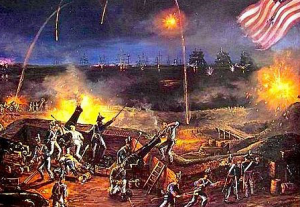 When I think of Independence Day, I often think about how the fireworks remind me of the many battles that went on in order to win our freedom. Then, I began to wonder if there was ever a time when the 13 colonies almost didn’t become the United States. Britain was, after all, the world’s greatest superpower at the time. British soldiers fought on 5 continents and they had an amazing navy. They massacred rebels and civilians in Jamaica and India around the same time and retained those colonies. So, why not the 13 colonies of North America? There are many explanations, but the one I found most interesting seems, almost to tie to the way things are in America right now…and really all along.
When I think of Independence Day, I often think about how the fireworks remind me of the many battles that went on in order to win our freedom. Then, I began to wonder if there was ever a time when the 13 colonies almost didn’t become the United States. Britain was, after all, the world’s greatest superpower at the time. British soldiers fought on 5 continents and they had an amazing navy. They massacred rebels and civilians in Jamaica and India around the same time and retained those colonies. So, why not the 13 colonies of North America? There are many explanations, but the one I found most interesting seems, almost to tie to the way things are in America right now…and really all along.
The reality is that Britain won many times on the battlefield, but…lost in the taverns. The taverns, you say. How 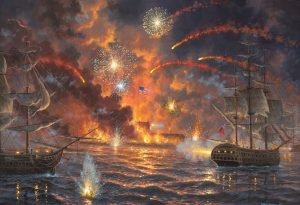 could that be? Well, taverns were everywhere. They were the social network of colonial life, much like the town hall meetings, and even more, like Facebook or Twitter today. Some areas of Massachusetts and Pennsylvania had taverns every few miles. People could get their mail there, hire a worker, talk to friends, sell crops, buy land, and eat a good meal. It was in these places that opinions were formed. People discussed the problems they had with British rule, and talked about how to get rid of the yoke of the Mother country.
could that be? Well, taverns were everywhere. They were the social network of colonial life, much like the town hall meetings, and even more, like Facebook or Twitter today. Some areas of Massachusetts and Pennsylvania had taverns every few miles. People could get their mail there, hire a worker, talk to friends, sell crops, buy land, and eat a good meal. It was in these places that opinions were formed. People discussed the problems they had with British rule, and talked about how to get rid of the yoke of the Mother country.
Some say that Britain might have had a chance if they had been represented in the taverns too, but I don’t think so. The time had come for Americans to think for themselves, and to run their own lives and their own country. First came the Stamp Act and the Americans protested. More oppression followed, as did the protests. 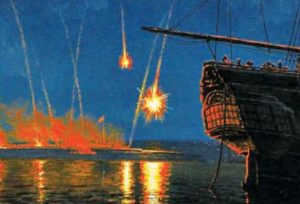 The resistance grew and grew, until war broke out. No matter what it took, the colonies were determined not to lose. The tavern meetings had accomplished what they needed to. No matter how many times it looked like Britain might win, they would not, because of…well, social networking. Social networking, when people get together to discuss right from wrong, and to discuss solutions. Sometimes the solutions are simple, and other times they create enough of a stir to bring about a revolution. No matter what the reason, the colonies were not about to lose, and because of that, we are a free nation and it was on this day, July 4, 1776 that our independence was made a reality, and we became the land of the free and the home of the brave. Happy Independence Day America!!
The resistance grew and grew, until war broke out. No matter what it took, the colonies were determined not to lose. The tavern meetings had accomplished what they needed to. No matter how many times it looked like Britain might win, they would not, because of…well, social networking. Social networking, when people get together to discuss right from wrong, and to discuss solutions. Sometimes the solutions are simple, and other times they create enough of a stir to bring about a revolution. No matter what the reason, the colonies were not about to lose, and because of that, we are a free nation and it was on this day, July 4, 1776 that our independence was made a reality, and we became the land of the free and the home of the brave. Happy Independence Day America!!

 My grandnephew, Lucas Iverson is turning six today, and he is proudly getting ready to go to Kindergarten. Lucas is a special kid. He has Down’s Syndrome, but he isn’t letting that or anything else slow him down. He has had to work harder than most kids, just to arrive at the same place, but just because it’s been harder, doesn’t mean Lucas will quit. He’s no quitter!!
My grandnephew, Lucas Iverson is turning six today, and he is proudly getting ready to go to Kindergarten. Lucas is a special kid. He has Down’s Syndrome, but he isn’t letting that or anything else slow him down. He has had to work harder than most kids, just to arrive at the same place, but just because it’s been harder, doesn’t mean Lucas will quit. He’s no quitter!!
Going to Kindergarten is going to make for a big year for Lucas, but that isn’t the only big step in Lucas’ next year. Over the next few months, Lucas is going to have some tests and procedures at Children’s Hospital in Denver, Colorado. I’m not sure what they are hoping to find with the tests or the procedures, but I pray they will find a way to make his life easier. His young life has already been filled with tests, and therapy to help with walking and such. Most of us would have wanted to quit long ago, but Lucas just keeps plugging along, because, he’s no quitter!!
Hard work has paid off for Lucas, because he is walking now, and that is a very big accomplishment. I think that his sister, Zoey might have had a lot to do with that. Zoey is just a little over four years younger than Lucas, but since she could walk earlier, she inspired him…and she helped him along. Sh has never been the kind of sister to push Lucas away. She loves him with all her heart. When they are in the playpen, they love to wrestle, and that is good exercise too, so I’m sure it has helped to make Lucas stronger. From what their mom, Cassie has told me, it’s quite a sight. It makes her and their dad, Chris laugh. The kids have a great time too.


Like most kids, Lucas live to watch television and movies. His favorite movie right now is Moana. Now if you’re like me, you might have to look that movie up to see what it is all about. Well, it’s an adventure movie about a teenager who sets out to save her people. Lucas likes that sort of thing. He also likes reading his cardboard books and coloring. I’m sure he’s quite an artist. Lucas is growing into quite a big boy, and it s all because he’s no quitter!! Today is Lucas’ 6th birthday!! Happy birthday sweet Lucas!! Have a great day!! We love you!!

 When a kid is fresh out of high school or just starting college, you really don’t know what kind of an adult they are going to be…much less what kind of parent. That all comes later, when you start to see how their kids turn out. My niece, Chelsea Hadlock is no different, but she has certainly proven to all who know her, just where her priorities lie. She is a great wife to my nephew, Ryan, and a wonderful mom to their kids, Ethan and Aurora, both of whom are sweet kids, and both of whom are well behaved and smart.
When a kid is fresh out of high school or just starting college, you really don’t know what kind of an adult they are going to be…much less what kind of parent. That all comes later, when you start to see how their kids turn out. My niece, Chelsea Hadlock is no different, but she has certainly proven to all who know her, just where her priorities lie. She is a great wife to my nephew, Ryan, and a wonderful mom to their kids, Ethan and Aurora, both of whom are sweet kids, and both of whom are well behaved and smart.
My sister, Allyn Hadlock tells me that Chelsea is their favorite daughter-in-law. Now while Chelsea is their only daughter-in-law, and technically they are joking about it, that doesn’t mean that it isn’t the truth. Allyn says that when they say that, they really mean it, because she is a perfect fit for their family, and her love for her husband, Ryan, endears her to the whole family. In reality, she is more like a daughter to them, than a daughter-in-law.
Chelsea is quite talented. She is a great baker, and has sold her baked goods. Since I’ve had her baked goods, I can attest to that. Chelsea started making jewelry a few years ago, and her work is beautiful. For a while she sold her jewelry online, but lately she has been taking it to Comic-Con to sell it. She will be attending Comic-Con in Denver, Colorado this weekend. She has also attended in Cheyenne Wyoming and Portland, Oregon, where she also sold her jewelry. She has been quite successful, and in reality, her jewelry sells itself.
At church, Chelsea sings as a backup singer, and teaches her children to love the Lord, as she does. She is nurturing their relationship with God, and has made all of us so proud of her love of God. She also has a great 
 sense of humor, and loves to tease her family. She is also a good sport when being teased. She and Ryan have been best friends since the day they met, and were instantly inseparable. I think it was love at first sight…or, more likely a match made in Heaven. Ryan has never been more happy than all the years he and Chelsea have been together. She is just a loving girl, and she makes Ryan and all those who know her very happy. Today is Chelsea’s birthday. Happy birthday Chelsea!! Have a great day!! We love you!!
sense of humor, and loves to tease her family. She is also a good sport when being teased. She and Ryan have been best friends since the day they met, and were instantly inseparable. I think it was love at first sight…or, more likely a match made in Heaven. Ryan has never been more happy than all the years he and Chelsea have been together. She is just a loving girl, and she makes Ryan and all those who know her very happy. Today is Chelsea’s birthday. Happy birthday Chelsea!! Have a great day!! We love you!!

